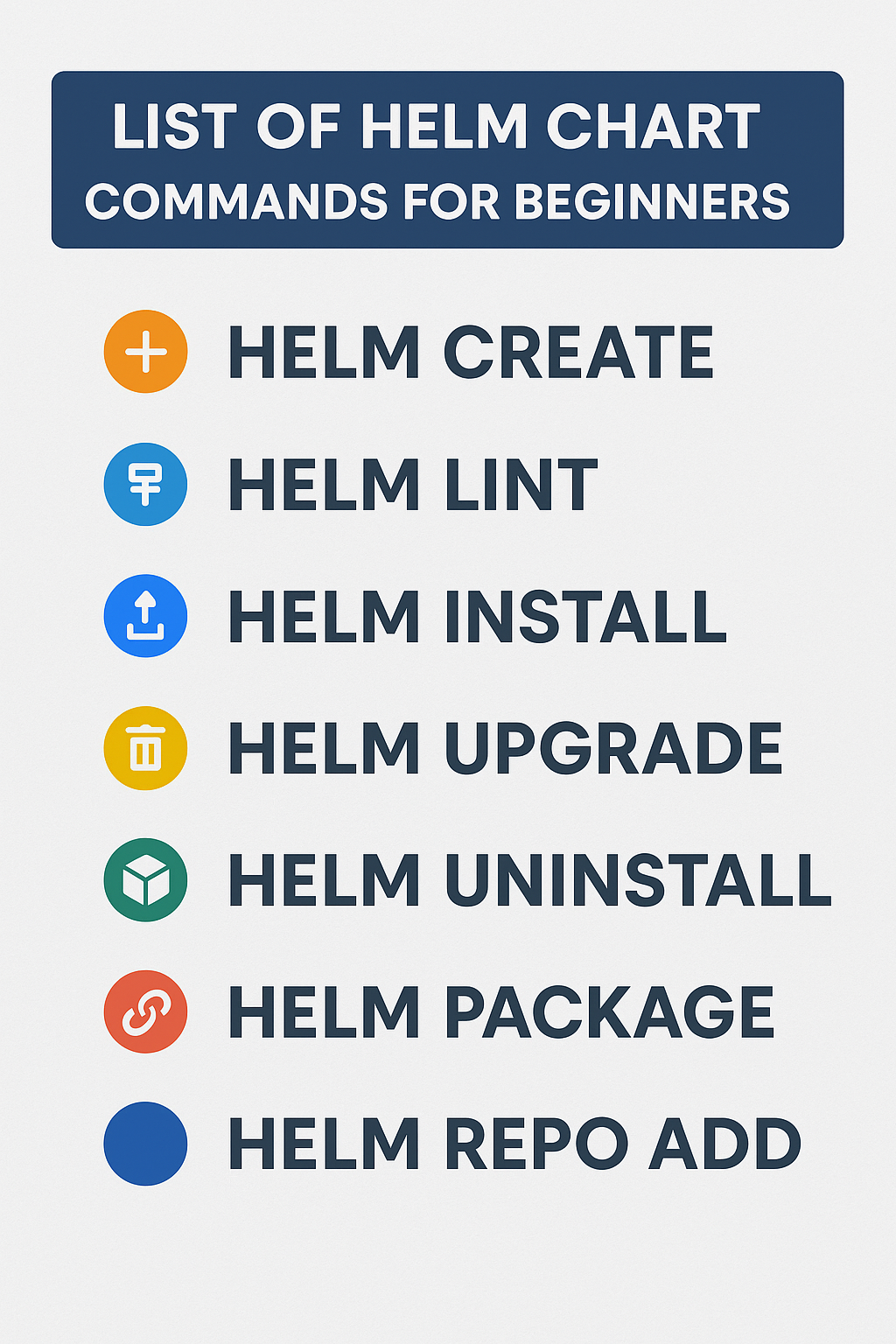Top Business Use Cases for Helm Charts in Kubernetes Deployments
A Helm chart is a Kubernetes package that contains all the necessary resource definitions (YAML templates) to deploy and manage an application or microservice in a repeatable and controlled way.

What is the Use of Helm Chart?
A Helm chart is a package manager for Kubernetes, similar to how apt is used for Debian or yum for RHEL.
It is used to:
- Package Kubernetes resources into a single unit (like Deployments, Services, ConfigMaps, etc.)
- Version and upgrade applications easily
- Templatize configurations (via values.yaml)
- Automate the deployment of complex applications
Purpose of Helm Chart
| Feature | Purpose |
|---|---|
| Parameterization | Customize deployments without modifying templates (via values.yaml) |
| Reusability | Reuse chart across dev, staging, and prod environments |
| Simplified Deployment | Install an app with one command: helm install |
| Environment Management | Test, upgrade, rollback with ease |
| CI/CD Integration | Works seamlessly with GitOps, ArgoCD, Jenkins |
| Dependency Management | Use subcharts and shared components like DBs or Redis easily |
Business Use Case of Helm Charts
1. Consistent Application Deployment Across Environments
Use Case: A company wants to deploy the same application to dev, QA, staging, and prod environments without modifying the raw YAMLs.
- Problem Solved: Reduces manual errors and configuration drift.
- Example: Jenkins or Redis deployments configured differently via
values.yaml.
2. Microservices Deployment at Scale
Use Case: Large-scale enterprise with dozens of microservices wants to manage configurations and deployments via CI/CD pipelines.
- Problem Solved: Reusability and scalability with templated charts.
- Example: Use one chart to deploy multiple services by overriding values.
3. SaaS Platform With Multi-Tenant Deployment
Use Case: A SaaS company needs to deploy isolated environments per client (tenant).
- Problem Solved: Helm makes it easy to parameterize deployments using
--setorvalues.yaml. - Example: Deploying a full stack (frontend, backend, database) per customer.
4. GitOps and DevOps Automation
Use Case: Integrate with GitOps tools like ArgoCD or Flux for automated chart deployment from a Git repo.
- Problem Solved: Declarative infrastructure and continuous delivery.
- Example: Helm charts version-controlled and synced to clusters automatically.
5. Versioning and Rollback Support
Use Case: A business needs safe rollback options after a failed deployment.
- Problem Solved: Helm maintains a release history (
helm rollback). - Example: Jenkins upgrade fails, rollback to the previous stable version in seconds.
When Should You Use Helm?
| Scenario | Use Helm? | Why |
|---|---|---|
| Manual single-pod deployment | No | Too simple for Helm overhead |
| Multi-service, environment-specific deployments | Yes | Helm simplifies templating and config |
| CI/CD automation | Yes | Easy to integrate |
| GitOps workflows | Yes | Declarative and version-controlled |
| Developer onboarding | Yes | Reduces complexity with 1-command deployment |
Helm Chart Structure (Service Deployment)
1. Helm Repository Management
jenkins-helm/
├── Chart.yaml
├── values.yaml
├── templates/
│ └── service.yaml
Use these if you host your Helm chart as a GitHub Pages-based Helm repo.Check this link:
Jenkinswithdockercomposeup/manifests at master · jaganrajagopal/Jenkinswithdockercomposeup
# Add your GitHub Helm repo (assuming you set it up)
helm repo add jenkins-helm https://jaganrajagopal.github.io/Jenkinswithdockercomposeup/
# Update to get latest chart index
helm repo update
# Search your chart in the added repo
helm search repo jenkins-helm
# Remove your Helm repo if needed
helm repo remove jenkins-helm
2. Deployment Commands
Use these for deploying the converted jenkins-helm chart from local directory.
# Install the Helm chart
helm install jenkins ./jenkins-helm -n jenkins --create-namespace
# Install with custom values file
helm install jenkins ./jenkins-helm -f custom-values.yaml
# Upgrade the release after changes
helm upgrade jenkins ./jenkins-helm
# Upgrade with values override
helm upgrade jenkins ./jenkins-helm -f custom-values.yaml
# Uninstall the release
helm uninstall jenkins -n jenkins
# List all releases in current or specific namespace
helm list
helm list -n jenkins
3. Debugging and Validation
# Dry-run install with debug logs
helm install jenkins ./jenkins-helm --dry-run --debug
# Template the chart into raw Kubernetes manifests (without installing)
helm template jenkins ./jenkins-helm
# Validate rendered output via kubectl dry-run
helm template jenkins ./jenkins-helm | kubectl apply -f - --dry-run=client
# Lint the chart for errors
helm lint ./jenkins-helm
4. Chart Packaging and Deployment
# Package your Helm chart into a .tgz file
helm package ./jenkins-helm
# (Optional) If using GitHub Pages, generate the Helm repo index
helm repo index . --url https://jaganrajagopal.github.io/Jenkinswithdockercomposeup/
# Push the packaged chart to an OCI registry (optional if you use OCI)
helm push jenkins-helm-*.tgz oci://my-registry.io/charts
# Pull a chart from OCI registry (if hosted there)
helm pull oci://my-registry.io/charts/jenkins-helm --untar
Conclusion
Helm Charts have become an essential tool in the Kubernetes ecosystem, offering a standardized and repeatable way to deploy applications across environments. Whether you’re managing a single microservice or orchestrating complex enterprise workloads, Helm simplifies configuration, reduces human error, and empowers teams to scale deployments efficiently.
By abstracting Kubernetes manifests into reusable templates, Helm not only accelerates the deployment process but also enhances maintainability, version control, and CI/CD automation. For organizations embracing DevOps and GitOps practices, Helm is not just a convenience—it’s a strategic enabler of modern cloud-native infrastructure.
If you’re deploying to Kubernetes, Helm isn’t optional—it’s essential.
